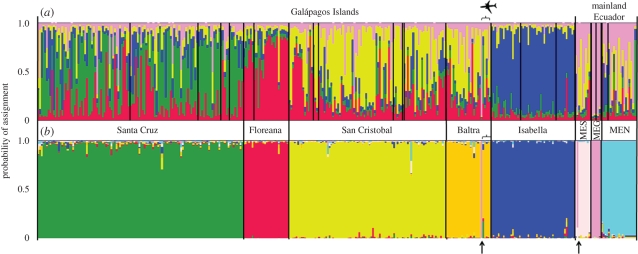Figure 2.
Clustering of Culex quinquefasciatus individuals from the Galápagos Islands and mainland Ecuador based on the Structure 2.2 algorithm (Pritchard et al. 2000). Each of 343 individuals is represented by a vertical bar partitioned in colours segmented according to the probability of belonging to one of the K genetic clusters. (a) No prior information on population is given and K is defined as the number of genetic clusters that best fit with the data (here K = 5, identified by the five colours in the graph). (b) Prior information on population is given (K = 8, according to geographical locations) to detect potential migrants. Mosquitoes caught in aeroplanes are grouped and indicated by an aeroplane image. Potential migrants are identified by an arrow. MEN, mainland Ecuador North; MEG, mainland Ecuador Guayaquil; MES, mainland Ecuador South.

